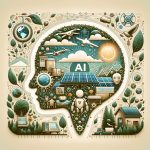The rivalry between OpenAI and Vertex AI has become a focal point in the technological world, as both platforms have emerged as major contenders in the artificial intelligence sector. They each offer distinct capabilities and tools that cater to different aspects of AI development and deployment, with OpenAI being renowned for its language processing prowess and Vertex AI for its comprehensive suite of AI model management tools.
The history of AI’s rise to prominence reveals a landscape where numerous players have vied for dominance. OpenAI, founded as a non-profit with the aim of promoting and developing friendly AI, gradually transitioned into a more commercially driven entity, marked by the introduction of its subscription model for GPT-3. Meanwhile, Google’s Vertex AI, building upon Google’s extensive history in machine learning with tools like TensorFlow and Cloud AI, has continually expanded its services to provide a full spectrum of AI tools, including AutoML and AI infrastructure. Over time, both platforms have significantly influenced the AI domain by providing state-of-the-art models and democratizing access to advanced AI technologies for developers and businesses.
What Does OpenAI Offer?
OpenAI has positioned itself as a leader in language understanding and content generation, with offerings such as GPT-4 and ChatGPT. Its DALL-E and Whisper models have disrupted creative and communication fields, enabling the generation of images and the transcription of speech with unprecedented accuracy. The platform’s continuous enhancements ensure that its AI models remain at the cutting edge, but its sophisticated tools can come at a high cost and may present a steep learning curve.
How Does Vertex AI Stand Out?
Contrastingly, Google’s Vertex AI provides an array of over 130 generative AI models, with its AutoML service allowing even those with minimal machine learning expertise to harness Google’s AI technology. The platform’s integrated ML workflows and MLOps tools streamline the lifecycle of AI projects, supporting a holistic approach to AI development. Despite its extensive offerings, the complexity of its tools can be daunting for AI novices, and its deep integration with Google Cloud may limit options for users accustomed to other cloud services.
How Do the Platforms Compare?
When contrasting OpenAI with Vertex AI, OpenAI’s GPT-4 emerges as a superior choice for advanced language tasks, whereas Vertex AI’s broad set of tools and models, along with its MLOps support, offer versatility for managing complex AI projects. The selection between these AI titans hinges on the users’ specific needs, with OpenAI serving those who prioritize language capabilities and ease of use, and Vertex AI appealing to those seeking comprehensive AI model management solutions.
In a scientific context, a recent publication in the Journal of Artificial Intelligence Research titled “Challenges and Opportunities in AI: Towards a Sustainable Ecosystem” elucidates the complexity and rapid evolution of AI technologies. The paper discusses the importance of accessible AI platforms that cater to a diverse range of users, highlighting the need for tools that balance usability with advanced functionality—themes that resonate with the offerings from OpenAI and Vertex AI. This research correlates with the current analysis, emphasizing the importance of user-centric AI development in achieving broad adoption and impact.
Information of Use to the Reader?
- OpenAI’s products favor tasks requiring high-quality language generation like creative writing.
- Vertex AI’s extensive model suite is ideal for projects demanding a variety of input types.
- Users should weigh the cost and learning curve against their project’s specific requirements.
In conclusion, the intense competition and innovation present within the AI industry, spearheaded by giants like OpenAI and Vertex AI, have led to an array of powerful and diverse tools that cater to the burgeoning needs of AI application. OpenAI’s exceptional capabilities in language processing make it indispensable for tasks necessitating human-like text generation, while Vertex AI’s extensive toolbox and integration with Google Cloud offer a robust environment for the development and management of AI models. Users must consider their project-specific demands, whether seeking the creative potential of OpenAI’s solutions or the comprehensive, integrated approach of Vertex AI, to leverage these platforms effectively.










